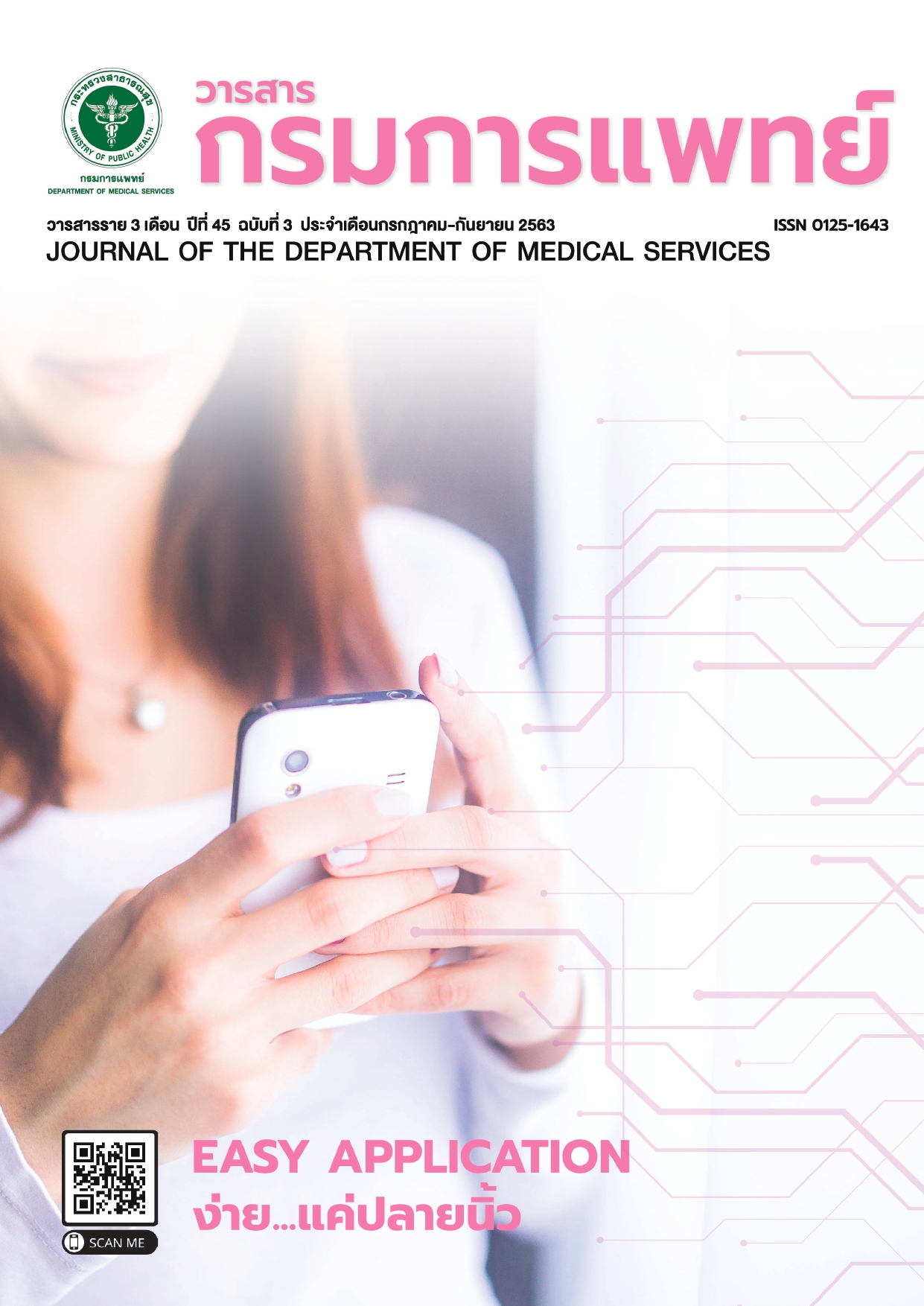Medicine Possession Ratio of Antiepileptics in Pediatric Patients with Epilepsy in Queen Sirikit National Institute of Child Health
Keywords:
Medicine possession ratio, MPR, Epilepsy, AntiepilepticAbstract
Background : Medical treatment for pediatric patients who had epilepsy could be incomplete due to interrupted visits for antiepileptic prescriptions or coverage restrictions by health insurance schemes. Studies on continuity in the use of antiepileptics as measured by medicine possession ratio (MPR) were scarce.
Method : This study was a retrospective data analysis aiming for estimating the MPR of antiepileptics across insurance schemes and determining independent factors associated with variation in the MPR. The study patients were children with epilepsy who visited the study hospital and were prescribed with antiepileptics during 1 January 2012 to 31 December 2017. The mean MPR for each insurance scheme were calculated and analyzed factors associated with the MPR, using a linear regression.
Results : On average, the MPR of antiepileptics during six years of the study period was 63.3% (SD, 29.9%). Patients covered by ‘Disability Scheme (DS)’ and those in transition from Universal Coverage Scheme (UCS) to DS had a higher MPR than other schemes. Based on linear regression analysis, patients under the DS had 7.0 percentage (%) point higher in MPR than those under the UCS with cross-zone referrals (p<0.05). Patients receiving the antiepileptics for a duration of five years or above had a higher MPR than those with the window periods between the first and the last antiepileptic prescriptions of up to one year by 27.1% points (p<0.05). Patient’s domicile was not statistically associated with the antiepileptic MPR (p=0.766).
Conclusions : Pediatric patients with epilepsy varied with respect to MPR, dependent on health insurance schemes and window periods between the earliest and latest prescriptions of the antiepileptic prescriptions.
References
Atlas; country resources for neurological disorders-2nd ed. geneva. World Health Organization; 2017 [cited 2018 Mar 1]. Available from http://apps.who.int/iris/bitstream/ handle/1 0665/258947/9789241565509-eng.pdf?sequence=1
World Health Organization. Epilepsy. [cited 2018 Mar 1] Available from http://www.who.int/mediacentre/factsheets/ fs999/en/
World Health Organization. Infographics on epilepsy 2016-2017. [Online] 2018 [cited 2018 Mar 1] Available from http:// www.who.int/mediacentre/ infographic/mental-health/ epilepsy/en/
Camfield P, Camfield C. Incidence, prevalence and aetiology of seizures and epilepsy in children. Epileptic Disord 2015; 17: 117-23.
Asawavichienjinda T, Sitthi-Amorn C, Tanyanont W.Prevalence of epilepsy in rural Thailand: a population-based study. J Med Assoc Thai 2002; 85: 1066-73. 6. Sakulrungjalas T. Effects of Epilepsy on Children: Prevention and Treatment. Thai Journal of Nursing Council 2018; 33: 5-18.
Wei SH, Lee WT. Comorbidity of childhood epilepsy. J Formos Med Assoc 2015; 114: 1031-38.
Piyasil V, Sriudomkajorn S, Suwanpairat J. Behavioral problems of epileptic children at Queen Sirikit National Institute of Child Health. J Med Assoc Thai 2008; 91: S9-14.
Caplan R, Siddarth P, Gurbani S, Hanson R, Sankar R, Shields WD. Depression and anxiety disorders in pediatric epilepsy. Epilepsia 2005; 46: 720-30.
Pazzaglia P, Pazzaglia LF. Record in grade school of pupils with epilepsy: an epidemiological study. Epilepsia 1976; 17: 361-6.
Thai Epilepsy Society. Clinical Practice Guidelines for Epilepsy [Online] 2016 [cited 2019 May 6]. Available from http:// thaiepilepsysociety.com/wp-content/uploads/2016/11/ Clinical Practice Guidelines for Epilepsy_2015.pdf
Kangwal C, Kongsaktrakol C, Maneesriwongul W, Visudtibhan. A Factor Related to Medication Adherence among Children with Epilepsy. Rama Nurs J 2017: 44-59.
Somsak T, Sunee L, Sineenat P. Problems and guidelines for services, North-Eastern Thai Journal of neuroscience; 6: 55-64.
Queen Sirikit National Institute of Child Health. [Online] 2014 [cited 2019 May 6]. Available from http://www. childrenhospital.go.th/html/2014/th/รายงานประจำปีสถาบัน สุขภาพเด็กแห่งชาติมหาราชินี
Sangeeta H. Ravat, Rohit Gupta Antiepileptic drugs in pediatric epilepsy. Invited Review 2008; 3: 7-15.
Prasat Neurological Institute. Clinical practice guidelines for epilepsy. Bangkok: Tanapress CO., LTD; 2016. (in Thai)
Anna Rosati, Salvatore De Masi, Renzo Guerrini.Antiepileptic Drug Treatment in Children with Epilepsy. CNS Drugs 2015; 29: 847–63.
Abdulghani HM, Mahdi AH, Salih MA, Al-Kordi AGSaudi, Al-Faris EA. Compliance with appointments and medications in a pediatric neurology clinic at a University Hospital in Riyadh, Saudi Arabia. Med J 2002; 23: 969-74.
National Health Security Office [NHSO]. Health insurance guideline for disabled National Polite Security Office. [cited 2019 May 6]. Available from https://www.nhso.go.th/ files/userfiles/file/2016/02/%E0%B8%84%E0%B8%B9% E0%B9%88%E0%B8%A1%E0%B8%B7%E0%B8%AD%20%E0%B8%97_74.pdf
Ana-Claire M, Tarun D, Juliana M, Shekhar S, Gretchen B. Global disparities in the epilepsy treatment gap: a systematic review.Bull World Health Organ 2010; 88: 260-6.
Alla G, Nazira Z, Alexander SW. Allen Hauser. Epilepsy and treatment gap in urban and rural areas of the Southern Kazakhstan in adults, Epilepsy and Behaviors; 67: 98-104.
Downloads
Published
How to Cite
Issue
Section
License
บทความที่ได้รับการตีพิมพ์เป็นลิขสิทธิ์ของกรมการแพทย์ กระทรวงสาธารณสุข
ข้อความและข้อคิดเห็นต่างๆ เป็นของผู้เขียนบทความ ไม่ใช่ความเห็นของกองบรรณาธิการหรือของวารสารกรมการแพทย์



